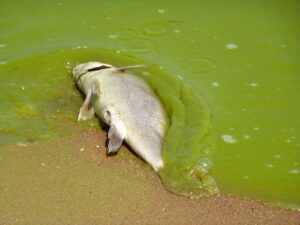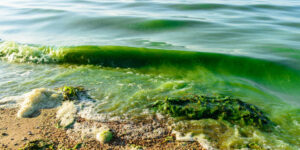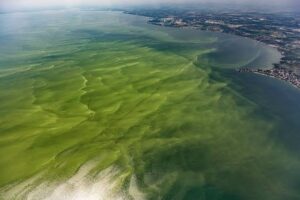Back to: MICROBIOLOGY 100 LEVEL
Welcome to class!
Hi there, superstar! I’m so glad you’re here today. You always bring your best, and that’s what makes learning exciting. Today, we’re going to look into a topic that affects both our health and our environment—Algal toxins and blooms. Don’t worry, I’ll guide you through it like a trusted friend. Let’s get started!
Algal Toxins And Blooms
What are Algae?
Algae (singular: alga) are simple, plant-like organisms that live mostly in water. They are not true plants because they don’t have roots, stems, or leaves, but they do make their own food through photosynthesis. Some are microscopic, while others, like seaweed, can be seen with the naked eye.

Algae are usually very helpful. They produce oxygen and serve as food for many aquatic animals. But under certain conditions, they can misbehave—and that’s where things get interesting.
What Are Algal Blooms?
An algal bloom is when algae grow very fast and multiply rapidly, forming large, visible patches in water. These blooms are often caused by:
Too many nutrients in the water (especially nitrogen and phosphorus from fertilisers or sewage)
Warm temperatures
Still or stagnant water
A common type is the harmful algal bloom (HAB), where the algae not only grow out of control but also release toxins that can harm humans, animals, and the environment.
Algal Toxins
Some types of algae, especially cyanobacteria (also called blue-green algae), produce dangerous toxins. These toxins can:
Poison fish and other aquatic animals
Contaminate drinking water
Cause skin rashes, stomach upset, and even liver damage in humans
Kill livestock and pets that drink the affected water
There are different types of algal toxins depending on the kind of algae:

Microcystins: Affect the liver and are common in freshwater
Saxitoxins: Affect the nervous system and are found in shellfish
Domoic acid: Can cause memory loss and brain damage when consumed in seafood
Environmental Impact of Algal Blooms
Kills aquatic life: When the algae die and decompose, they use up all the oxygen in the water, causing fish and other animals to suffocate.
Blocks sunlight: Thick algal layers block sunlight from reaching underwater plants, which need light to survive.
Damages water quality: The water becomes smelly, discoloured, and unsafe for use.

Imagine if you poured too much fertiliser on your garden—plants would grow fast, but the soil might suffer. That’s similar to what happens when fertiliser runs into rivers and lakes. The algae grow wildly, then start to harm the water and everything living in it.
Summary
- Algae are water organisms that can grow rapidly under certain conditions, causing algal blooms.
- Harmful algal blooms (HABs) release toxins that can poison animals, humans, and the environment.
- Algal toxins include microcystins, saxitoxins, and domoic acid.
- These blooms lower water quality, kill aquatic life, and affect fishing and tourism.
Evaluation
- What is an algal bloom?
- Name two causes of algal blooms.
- Mention two types of algal toxins and their effects.
- How do algal blooms affect aquatic animals?
- Why is it important to prevent fertiliser from entering rivers and lakes?
Remember, even the smallest things in nature—like algae—can teach us big lessons about balance and care. Keep learning with Afrilearn, and never stop growing. You‘re on a powerful journey to greatness!
